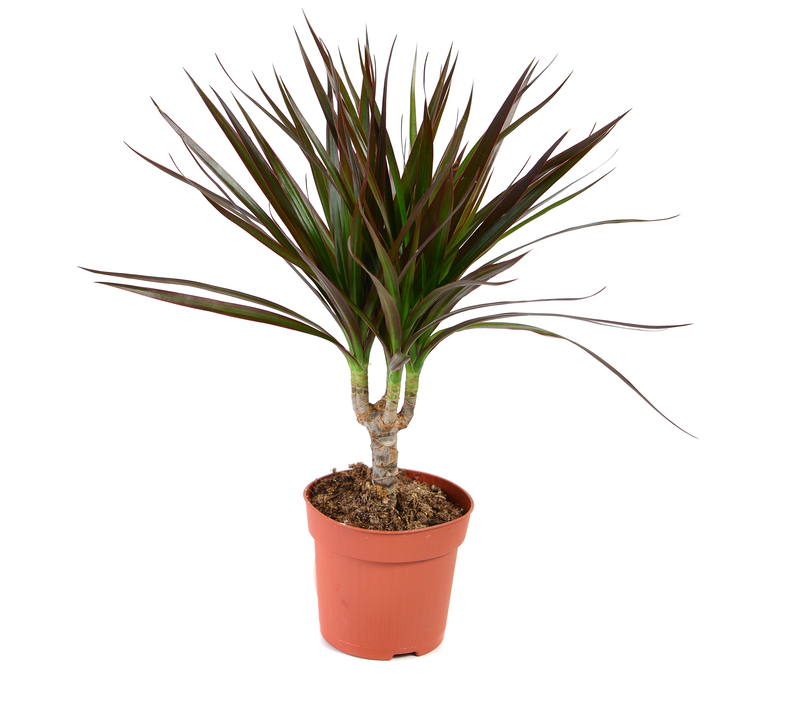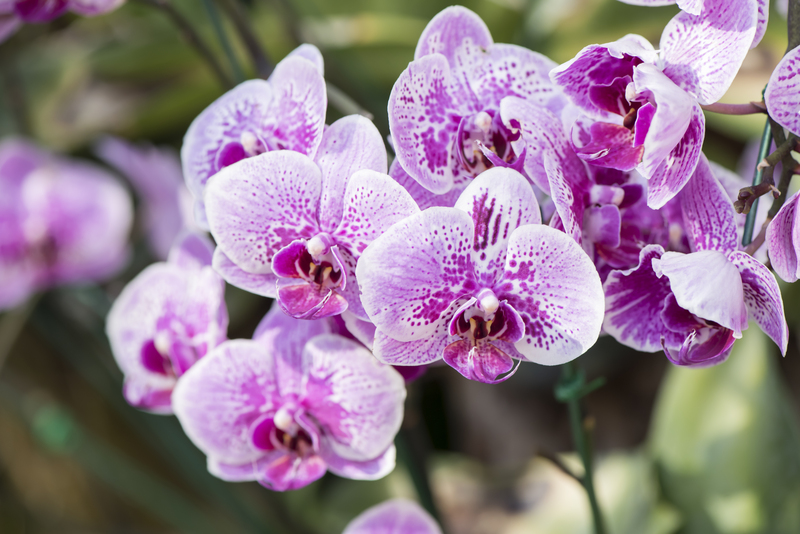Transform Your Outdoor Space: 9 Essential Tips for New Gardeners
Posted on 20/06/2025
Transform Your Outdoor Space: 9 Essential Tips for New Gardeners
Are you dreaming of a gorgeous, thriving garden that elevates your home's curb appeal and creates a peaceful outdoor sanctuary? If you're a beginner and want to transform your outdoor space, learning the basics of gardening is your crucial first step. Creating a lush, inviting backyard is both an art and a science--but with the right guidance, even first-time, aspiring gardeners can enjoy beautiful, rewarding results!
In this comprehensive article, we'll explore nine essential gardening tips that will set you on the path to outdoor transformation. Whether you have a small balcony, a modest backyard, or a sprawling landscape, these strategies will help you cultivate a healthy, vibrant garden environment--no green thumb required.
1. Start With a Vision: Plan Your Dream Garden
Every successful garden begins with a thoughtful plan. Before you touch the soil or purchase plants, invest time in envisioning the type of outdoor space you want to create. Ask yourself:
- What's the primary purpose of your garden? (Relaxation, entertaining, growing food, attracting wildlife, etc.)
- Which plants and colors inspire you?
- How much time will you realistically dedicate to maintenance?
- Do you want formal, structured beds or a natural, wild look?
Use a notebook or garden design app to sketch your ideas. Measure your space, noting sunlight patterns, shading, and existing features. Creating a garden "mood board" with clippings or online images can also help clarify your vision. Remember, a well-thought-out plan ensures your outdoor transformation is both rewarding and sustainable.

2. Understand Your Yard: Sun, Soil, and Shade
Knowing your garden's unique conditions is essential for success. Plants thrive in specific environments, so take the time to observe and document:
- Hours of sunlight and shade in different areas
- The direction your garden faces (north, south, east, west)
- Soil type: sandy, clay, loam, or silt
- Drainage patterns and low spots
- Wind exposure
Conduct a simple soil test--either with a home kit or by sending a sample to your local extension service. Understanding your yard's soil pH, nutrient levels, and composition will guide your choice of plants and any amendments needed.
Tip: Don't fight your site's conditions. Select plants suited to your existing environment for easier, more sustainable success.
3. Choose the Right Plants for Your Outdoor Space
With so many beautiful options, selecting plants can be overwhelming for beginners. Smart plant selection is key to a flourishing garden that thrives with minimal extra effort.
- Match plants to your light and soil: Most plant tags or seed packets indicate their preferred conditions.
- Go native: Native plants are adapted to your local climate and typically require less water and maintenance.
- Balance perennials (return each year) and annuals (last one season) for color and structure.
- Include a mix of heights, textures, and bloom times for year-round interest.
- Resist the urge to overcrowd--proper spacing ensures healthy growth and air circulation.
For beginners, easy-care favorites like lavender, salvia, hosta, ferns, marigolds, petunias, and ornamental grasses can make your outdoor transformation journey smoother.
4. Prepare the Soil: The Foundation of a Thriving Garden
Soil health is the secret behind every lush outdoor space. Take the time to revitalize your soil:
- Clear weeds, rocks, and debris from planting areas.
- Loosen compacted soil to improve drainage and root penetration. Use a spade, fork, or rototiller for larger beds.
- Add organic matter: Compost, well-rotted manure, or leaf mold improves nutrient content and soil structure.
- Test soil pH and adjust if necessary (lime for acidic soils, sulphur for alkaline).
Healthy, living soil produces stronger, more resilient plants--a setup that pays dividends for seasons to come.
5. Master the Art of Planting
Planting seems straightforward, but the right technique can make a big difference. Here's how to give your garden its best start:
- Plant in the early morning or evening to reduce transplant shock.
- Dig holes twice as wide (but no deeper than) the root ball.
- Gently tease out roots if they're pot-bound.
- Water deeply after planting to settle soil and eliminate air pockets.
- Top-dress with a layer of mulch (wood chips, straw, bark, or compost) to retain moisture and suppress weeds.
Tip: Group plants in odd numbers (3, 5, or 7) for a more natural, pleasing effect!
6. Water Wisely: Promote Strong Roots
Overwatering is one of the most common mistakes for new gardeners. To support vigorous growth:
- Water early in the morning to minimize evaporation and discourage diseases.
- Check soil moisture before watering--soil should be moist at root level, not the surface.
- Deep soakings are better than daily sprinkles. Aim for 1 inch of water per week (rain included).
- Adjust watering schedules for rainy, cool, or extremely hot weather.
- Use drip irrigation or soaker hoses for greater efficiency.
Remember, strong roots grow deep when the soil is encouraged to dry slightly between waterings.
7. Feed and Mulch: Nourishing Your Outdoor Sanctuary
Transform your outdoor space into a flourishing oasis by giving your plants what they need, when they need it. Here's how:
- Fertilize selectively: Use slow-release or organic fertilizers according to plant needs. Overfertilizing can harm plants and the environment.
- Continue to enrich soil with compost or mulch each season for sustainable growth.
- Mulch conserves moisture, regulates soil temperature, and suppresses weeds--an essential for low-maintenance gardening.
- Refresh mulch yearly for best results, but avoid piling it against plant stems.
8. Stay Ahead of Pests and Weeds
Nothing spoils an outdoor transformation faster than an infestation of destructive bugs or rampant weeds. A few simple practices can keep trouble at bay:
- Inspect plants regularly for insects, mildew, and disease. Early detection is half the battle.
- Encourage beneficial insects like ladybugs, lacewings, and bees to maintain balance.
- Hand-pull weeds or use a hoe before they set seed.
- Practice crop rotation and diversify plantings to disrupt pest cycles.
- If needed, use organic controls (neem oil, insecticidal soap, or diatomaceous earth) for mild infestations.
Tip: Healthy, well-fed plants are naturally more resilient against pests and disease!
9. Enjoy, Learn, and Evolve With Your Outdoor Space
Gardening is a journey, not a destination. Perhaps the most important tip for new gardeners is to enjoy the process and allow your garden to evolve over time. Spend a few minutes outside each day--observing, learning, and making notes.
- Document your successes and challenges in a garden journal.
- Take photos to track progress and inspire seasonal changes.
- Don't be afraid to experiment--gardening rewards curiosity and creativity!
- Research local plant swaps, gardening clubs, and online forums to share tips and inspiration.
Remember, every season brings new opportunities for growth--both for your plants and your skills as a gardener.

Bonus Tips: Level Up Your Outdoor Transformation
- Incorporate hardscaping (paths, patios, trellises) to add structure and beauty.
- Use containers to introduce color and flexibility, especially for small spaces or beginners.
- Group plants by watering needs for greater efficiency.
- Install rain barrels or a compost bin to make your garden more eco-friendly.
- Experiment with edible landscaping--herbs and vegetables make great garden companions!
Your New Garden Awaits: Start Transforming Your Outdoor Space Today
Taking your first steps as a new gardener is incredibly rewarding. By following these 9 essential gardening tips, you'll build a strong foundation for any outdoor space. Whether you want a peaceful retreat, an entertainer's paradise, or a sustainable food garden, the right knowledge and a dash of patience will make your vision a reality.
Start small, keep learning, and let nature inspire you. In no time, you'll watch your outdoor space transform into a living masterpiece--one that brings beauty, relaxation, and joy for years to come.
Useful Resources for Beginners
- Local Cooperative Extension Offices: Free soil testing and expert guidance
- Online gardening communities: Reddit's r/gardening, GardenWeb, RHS Advice (UK)
- Apps for planning: Garden Planner, iScape, SmartPlant
- Comprehensive guides: American Horticultural Society, Royal Horticultural Society
Let your journey begin--and transform your outdoor space into a place you'll love!

